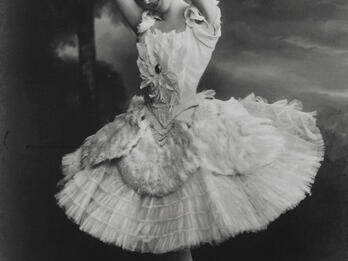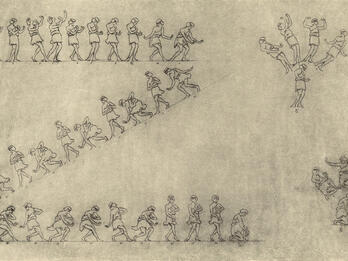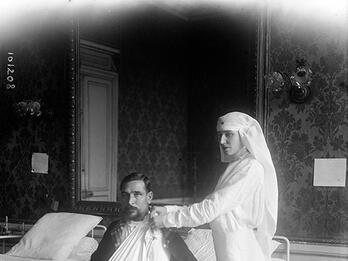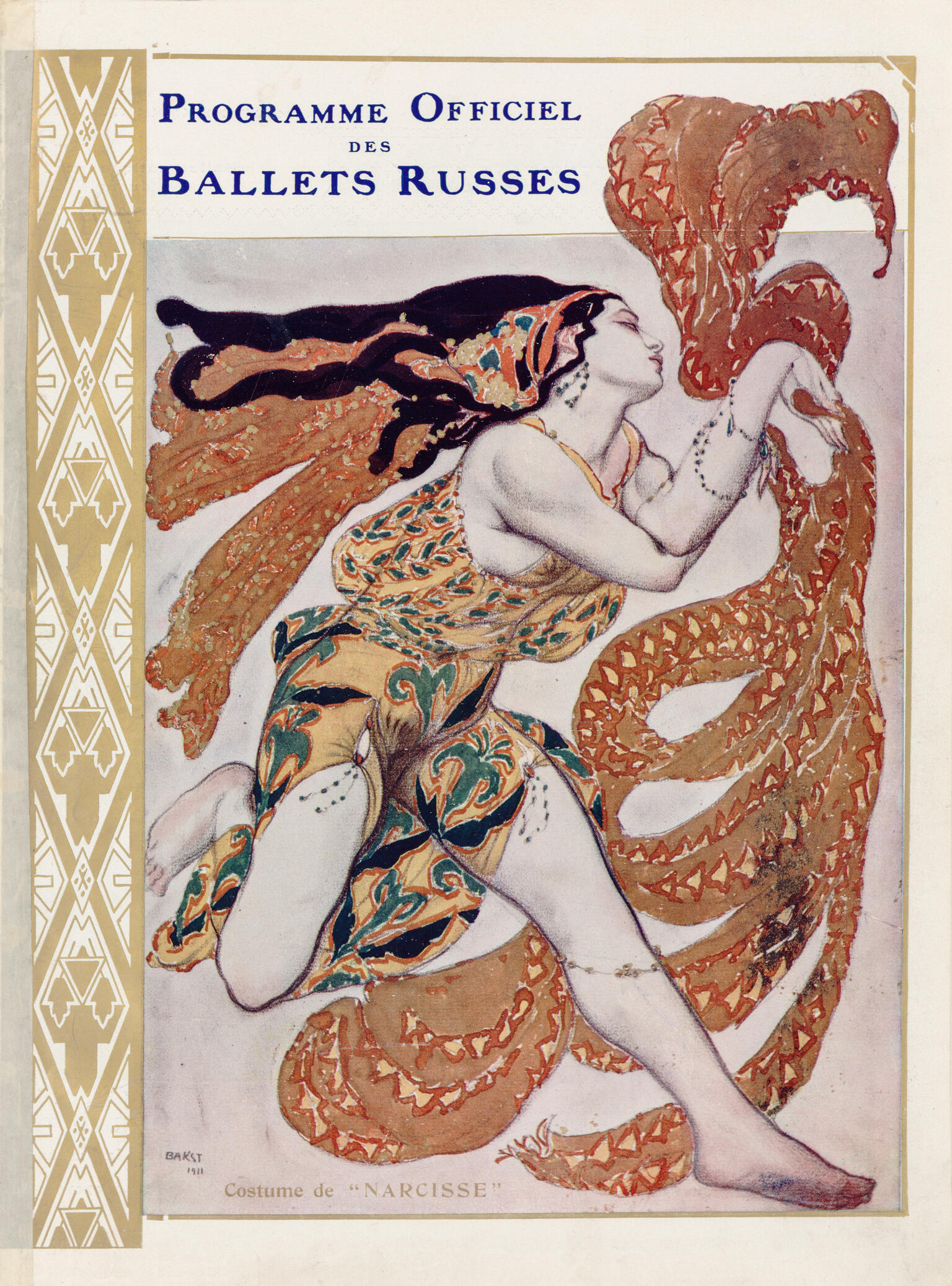Narcisse
Léon Bakst
1911
Credits
Published in: The Posen Library of Jewish Culture and Civilization, vol. 7.
You may also like

Anna Pavlova as the Dying Swan

Dance Study
Dance as a Solemn Ritual
Matilda Kshesinskaia: Swan Lake
The New Ballet versus the Old

Ida Rubinstein as a Nurse
Creator Bio
Léon Bakst
Léon Bakst was born Leyb Rosenberg in Grodno in the Russian Empire (today in Belarus) into a middle-class Jewish family. He studied painting at the St. Petersburg Academy of Fine Arts but was dismissed when he depicted the mother of Jesus as a Jewish peasant. Meeting Sergei Diaghilev in 1898 while cofounding the Russian art-nouveau World of Art movement (Mir Iskusstva) proved a fortuitous encounter, as Bakst came to design sets and costumes for many of Diaghilev’s Ballets Russes performances in Paris. His revolutionary approach to ballet combined Russian folklore, an exuberant and often gaudy display of color, and geometric patterns that simultaneously hid and accentuated the dancers’ bodies. His style, based on art-nouveau principles, became known as Bakstian orientalism.
You may also like

Anna Pavlova as the Dying Swan

Dance Study
Dance as a Solemn Ritual
Matilda Kshesinskaia: Swan Lake
The New Ballet versus the Old




